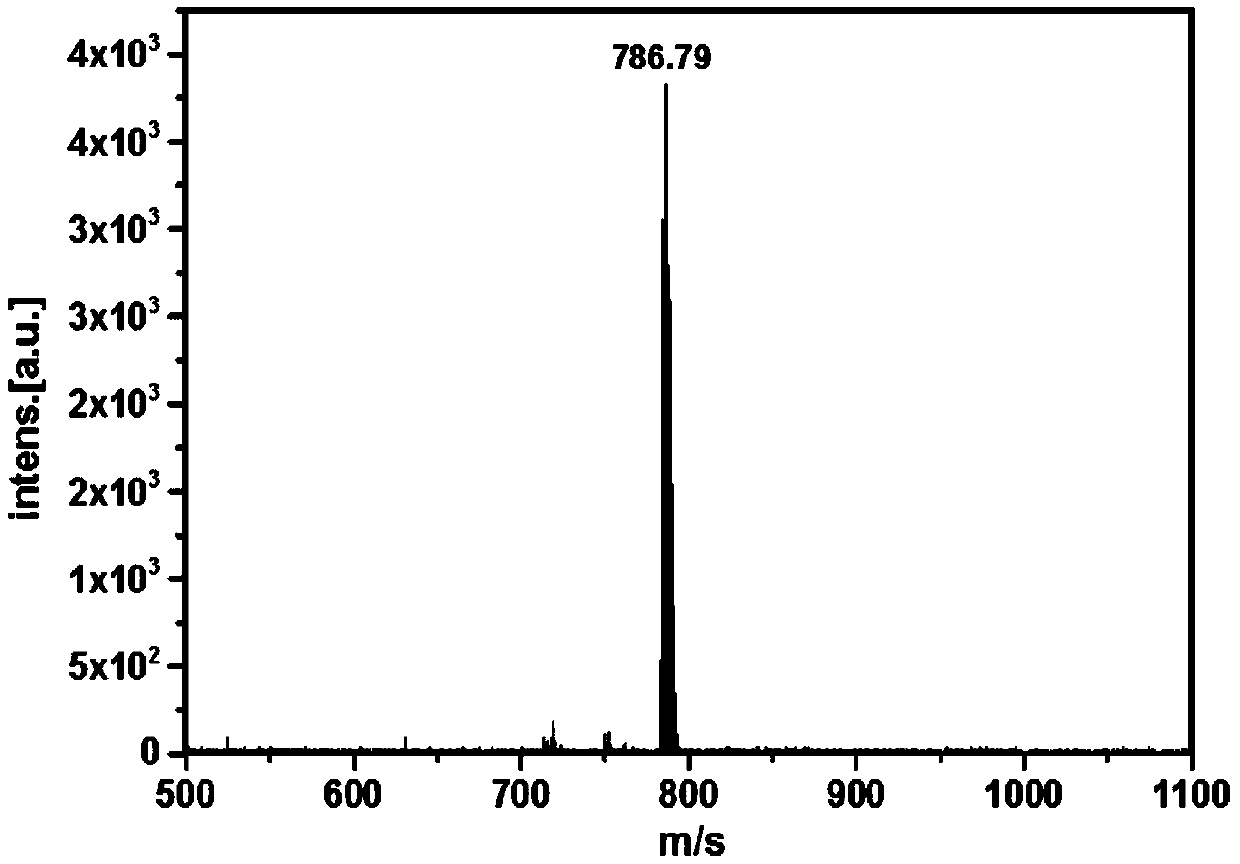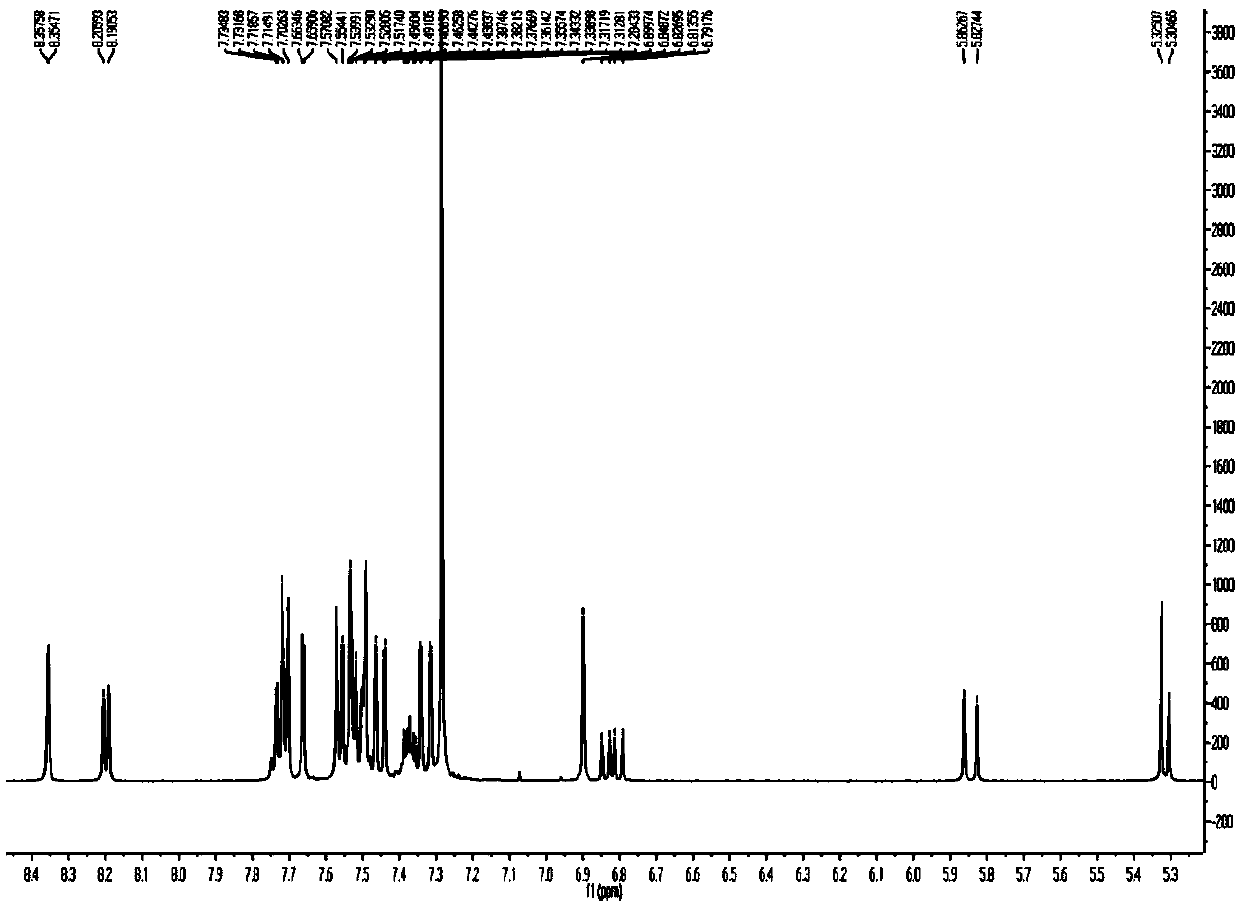Stable organic luminescent radical polymer and OLED device based on same
A technology of electroluminescent devices and free radicals, which can be applied in the fields of electro-solid devices, semiconductor devices, semiconductor/solid-state device manufacturing, etc., and can solve problems such as restricting applications.
- Summary
- Abstract
- Description
- Claims
- Application Information
AI Technical Summary
Problems solved by technology
Method used
Image
Examples
Embodiment 1
[0027] Example 1: Synthesis of Polymer 1
[0028] first step:
[0029]
[0030] Add 10.14g (55.9mmol) 1,3,5-trichlorobenzene, 0.5mL (6.2mmol) chloroform, 0.91g (6.8mmol) anhydrous aluminum trichloride to a thick-walled pressure bottle, and heat to 80°C for 2.5 After cooling to room temperature for h, the reaction mixture was poured into 1M hydrochloric acid solution, extracted three times with chloroform, dried over anhydrous sodium sulfate, and the solvent was distilled off, and purified by column chromatography with petroleum ether as an eluent to obtain 2.8 g of white solid A1. 1 H-NMR (500MHz, CDCl 3 ): δ7.39(d, J=2.4Hz, 3H), 7.26(d, J=2.2Hz 3H).6.71(s, 1H); MS(m / z): 553.65[M] + .
[0031] Step two:
[0032]
[0033] Under argon protection, add 150mL of anhydrous THF, 6g (10.80mmol) and 1.8g (16.2mmol) of potassium tert-butoxide to a 250mL two-necked bottle for 5 hours, then add 7.17g (29.16mmol) of chloranil for 1.5 hours After the reaction, the solvent was dis...
Embodiment 2
[0049] Example 2: Synthesis of Polymer 2
[0050] first step
[0051]
[0052] The synthesis procedure is the same as that of compound A6, except that the styrene in the reaction is replaced with acrylonitrile, and compound B1 is finally obtained.
[0053] second step
[0054]
[0055] The synthesis procedure is the same as that of polymer 1, except that A6 in the reaction is replaced by B1, and finally free radical polymer 2 is obtained.
Embodiment 3
[0056] Example 3: Synthesis of Polymer 3
[0057] first step
[0058]
[0059] Under argon protection, 6ml of toluene, N-vinylcarbazole (0.1eq), A5 (1eq) and AIBN (0.2eq) were added to a 50mL polymer bottle, and the temperature was raised to 70°C for 24h. After the reaction was completed, it was cooled to room temperature, and the reaction solution was slowly added dropwise into 50 mL of ice methanol under stirring, continued to stir for 24 h, filtered, and dried. The crude product was subjected to a methanol Soxhlet extractor for 36 hours, and finally 0.50 g of white polymer C1 was obtained. GPC:M w =2.3×10 4 , M w =2.5×10 4 ,PDI=1.1.
[0060] second step
[0061]
[0062] The synthesis procedure is the same as that of polymer 1, except that A6 in the reaction is replaced by C1, and finally free radical polymer 3 is obtained.
PUM
 Login to View More
Login to View More Abstract
Description
Claims
Application Information
 Login to View More
Login to View More - R&D
- Intellectual Property
- Life Sciences
- Materials
- Tech Scout
- Unparalleled Data Quality
- Higher Quality Content
- 60% Fewer Hallucinations
Browse by: Latest US Patents, China's latest patents, Technical Efficacy Thesaurus, Application Domain, Technology Topic, Popular Technical Reports.
© 2025 PatSnap. All rights reserved.Legal|Privacy policy|Modern Slavery Act Transparency Statement|Sitemap|About US| Contact US: help@patsnap.com



